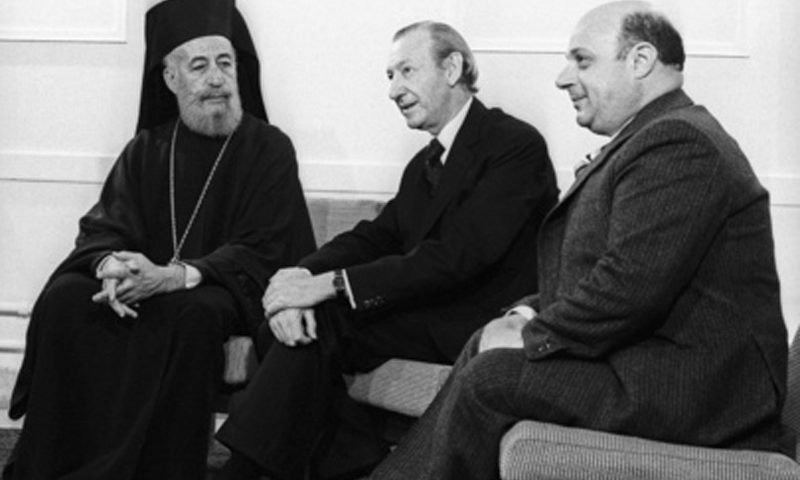By Michael Theodoulou
President Makarios, the Greek Cypriot leader, and Rauf Denktash, who headed the Turkish Cypriot community, reached an agreement in February 1977 that set the “guidelines” for subsequent negotiations. The goal was to establish a bicommunal federal republic, with a central federal government empowered to safeguard the unity of the country.
The 1977 agreement did not explicitly mention bizonality but it was implied. The 1974 Turkish invasion had left the Turkish Cypriots, who made up 18 per cent of the island’s population, in control of 36 per cent of its territory. It was clear that territorial adjustments would reduce this area, but the language of the agreement suggested it would not be divided into parcels of land. “The territory under the administration of each community should be discussed in the light of economic viability or productivity and land ownership,” the agreement said.
After Makarios’ unexpected death in August 1977, his successor Spyros Kyprianou, reached the second High Level Agreement with Denktash in May 1979.
Building on the previous accord, it outlined guidelines for further negotiations and included the stipulation that “there should be respect for human rights and fundamental freedoms of all the citizens of the Republic”.
This addressed a key Greek Cypriot concern: that the freedom of movement, settlement and the right to own property must be part of a solution. The 1977 agreement had only said that these principles were “open for discussion”
Priority would be given to reaching agreement on the resettlement of Greek Cypriot refugees in Varosha (the modern part of Famagusta) while discussions on the constitutional and territorial aspects of a comprehensive settlement got underway.
The agreement envisaged the island’s “demilitarisation”, and “the independence, sovereignty, territorial integrity and non-alignment of the Republic should be adequately guaranteed against union in whole or part with any other country and against any form of partition or secession”.
Although the two agreements were brief in length, they provided the skeleton for a settlement and were highly significant. They were used as the basis for all future negotiations.
By agreeing to negotiation on the basis of a federal solution, the Greek Cypriots effectively conceded that the bicommunal unitary state of 1960 was irretrievable. The demand for a federation had come from the Turkish Cypriots who in 1975 named the area under their control the Turkish Federated State of Cyprus.
At that stage they were not yet claiming independence from the state of Cyprus. That came in 1983 when Denktash and Turkey issued a unilateral declaration of independence proclaiming northern Cyprus as the ‘Turkish Republic of Northern Cyprus’. The move was condemned by the UN Security Council. The ‘TRNC’ has remained internationally unrecognised by all except Turkey.


